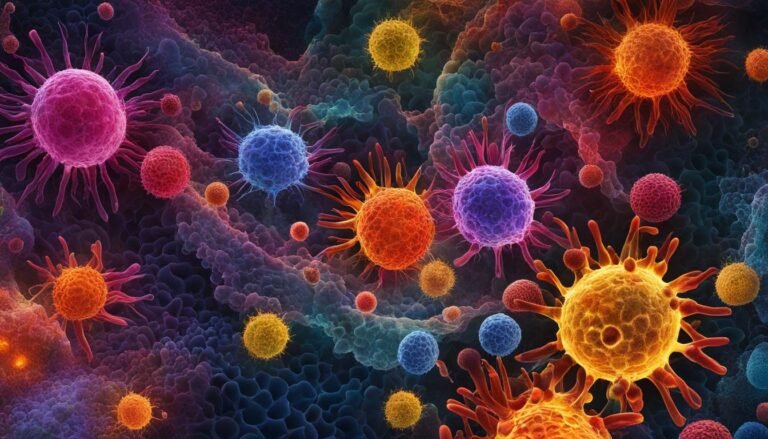What Organ is Self-Healing?
The liver is a remarkable organ with the ability to regenerate and repair itself. It has the unique capacity to regrow to its normal size even after up to 90% of it has been removed. This regenerative ability makes the liver a self-healing organ.
However, certain diseases and exposures can harm the liver beyond repair, such as cancer, hepatitis, medication overdoses, and fatty liver disease. Researchers have been studying the liver’s regenerative processes to understand how it works and potentially develop new treatment strategies for liver diseases and injuries.
Recent studies have shown that normal hepatocytes, not stem cells, in a specific zone of the liver called zone 2, are responsible for the bulk of liver maintenance and regeneration. These hepatocytes divide to replace liver cells in all zones that have reached the end of their natural lives. Additionally, researchers have identified a cell-signaling pathway that drives the zone 2 liver cells to repopulate damaged tissue. This pathway plays a crucial role in liver regeneration after injury.
Key Takeaways:
- The liver is a self-healing organ due to its regenerative ability.
- Normal hepatocytes in zone 2 of the liver are responsible for liver maintenance and regeneration.
- A cell-signaling pathway plays a crucial role in liver regeneration after injury.
- Certain diseases and exposures can harm the liver beyond repair.
- Researchers are studying liver regenerative processes to develop new treatment strategies.
Understanding Liver Regeneration
Liver regeneration is a complex process that involves various factors. One of the key proteins involved in liver regeneration is fibrinogen, a blood-clotting protein.
“After a diseased portion of the liver is removed through a liver resection, fibrinogen and blood platelets accumulate in the remaining liver, triggering the earliest stages of regeneration.”
Low levels of fibrinogen can lead to slower liver regeneration and increase the likelihood of needing a liver transplant. Understanding the role of fibrinogen in liver regeneration could help doctors determine if patients undergoing liver resection will successfully regrow their own liver tissues or need additional interventions, such as the administration of fibrinogen concentrates during surgery. This could potentially improve outcomes for patients with liver disease.
Impact of Fibrinogen on Liver Regeneration
Studies have shown that fibrinogen plays a crucial role in initiating and promoting liver regeneration. When liver resection occurs, the release of fibrinogen and accumulation of blood platelets at the site of injury stimulate the activation of various growth factors and cytokines, which trigger the regeneration process. These signals prompt cell proliferation and migration, promoting the formation of new liver tissues.
In addition to its role in blood clotting, fibrinogen also acts as a signaling molecule. It interacts with a specific receptor called interleukin-6 receptor (IL-6R), which is expressed on liver cells. This interaction activates a complex signaling cascade, leading to the production of various factors involved in liver regeneration. These factors include hepatocyte growth factor (HGF) and transforming growth factor-beta (TGF-β), which are crucial for the proliferation and survival of liver cells.
The presence of sufficient levels of fibrinogen is essential for the proper initiation and progression of liver regeneration. Studies have shown that mice lacking fibrinogen exhibit impaired liver regeneration, highlighting the importance of this protein in the process.
Fibrinogen and Liver Disease
Abnormal levels of fibrinogen can have implications for liver disease. In conditions such as chronic liver disease, fibrinogen levels may be reduced due to impaired liver function. This can negatively impact liver regeneration, leading to delayed healing and increased susceptibility to further damage. In such cases, supplemental administration of fibrinogen concentrates may be considered to support liver regeneration and improve patient outcomes.
Additionally, understanding the role of fibrinogen in liver disease can help identify potential therapeutic targets. By targeting fibrinogen-related pathways, researchers may find ways to enhance liver regeneration and develop novel treatments for liver diseases.
Factors Influencing Liver Regeneration
| Factor | Impact |
|---|---|
| Fibrinogen | Essential for initiating liver regeneration |
| Platelet Accumulation | Triggers growth factor release and cell signaling |
| Growth Factors | Promote cell proliferation and survival |
| Cytokines | Regulate the inflammatory response and tissue repair |
| Hepatocyte Growth Factor (HGF) | Stimulates liver cell growth and regeneration |
The table above summarizes some of the key factors involved in liver regeneration and their impact on the process.
In conclusion, fibrinogen plays a critical role in liver regeneration after resection. Understanding the role of fibrinogen can aid in predicting the success of liver tissue regrowth and guide interventions when necessary. Further research on fibrinogen and liver regeneration holds promise for improving outcomes in patients with liver disease.
The Potential for Regeneration in Humans
Regeneration in humans, the regrowth of lost tissues or organs in response to injury, has long been a fascinating topic in the field of medicine. While some tissues like skin, the vas deferens, and the liver exhibit a high capacity for regeneration, others were once believed to have limited or no regenerative abilities.
However, recent advancements in research have proven otherwise. Numerous tissues and organs can be induced to regenerate using innovative regenerative techniques. These techniques encompass instrument-based regeneration, regeneration with materials, regeneration by 3D printing, and regeneration with drugs.
These groundbreaking approaches have already enabled the successful regeneration of various tissues and organs, including bladders, skin tissue, muscles, blood vessels, and even scaled-down human hearts. The ongoing goal of scientists is to further enhance and refine these regenerative techniques, aiming for the full regeneration of a wider range of human organs.
Such advancements have the potential to revolutionize the field of medicine, offering new and improved treatment options for patients suffering from tissue and organ damage. As research continues to unravel the mysteries of human tissue regeneration, the future holds immense promise for regenerative medicine.
FAQ
What is a self-healing organ?
A self-healing organ refers to an organ that has the ability to regenerate and repair itself, such as the liver.
How does liver regeneration work?
Liver regeneration is a complex process where normal hepatocytes in a specific zone of the liver called zone 2 divide to replace liver cells in all zones that have reached the end of their natural lives. Researchers have also identified a cell-signaling pathway that drives the repopulation of damaged liver tissue.
What role does fibrinogen play in liver regeneration?
Fibrinogen, a blood-clotting protein, plays a key role in liver regeneration. After a diseased portion of the liver is removed, fibrinogen and blood platelets accumulate in the remaining liver, triggering the earliest stages of regeneration. Low levels of fibrinogen can lead to slower liver regeneration and increase the likelihood of needing a liver transplant.
How can understanding the role of fibrinogen in liver regeneration benefit patients?
Understanding the role of fibrinogen in liver regeneration can help doctors determine if patients undergoing liver resection will successfully regrow their own liver tissues or if additional interventions, such as the administration of fibrinogen concentrates during surgery, are necessary. This knowledge could potentially improve outcomes for patients with liver disease.
Can other organs besides the liver regenerate in humans?
Yes, recent advances in research have shown that numerous tissues and organs can be induced to regenerate in humans. Techniques such as instrument-based regeneration, regeneration with materials, regeneration by 3D printing, and regeneration with drugs have been developed and operationalized to allow for the regeneration of various tissues and organs.
What are some examples of regenerated human tissues and organs?
Regenerative techniques have allowed for the regeneration of various tissues and organs, such as bladders, skin tissue, muscles, blood vessels, and even scaled-down human hearts.
What is the goal of regenerative medicine?
The goal of scientists in the field of regenerative medicine is to further advance regenerative techniques and induce full regeneration in more human organs. This could revolutionize the field of medicine and provide new treatment options for patients with tissue and organ damage.
Source Links
- https://www.nih.gov/news-events/nih-research-matters/cells-maintain-repair-liver-identified
- https://en.wikipedia.org/wiki/Regeneration_in_humans
- https://www.genomebc.ca/blog/the-liver-is-the-only-organ-in-the-human-body-that-can-regenerate-although-some-patients-who-have-a-diseased-portion-of-their-liver-removed-are-unable-to-regrow-the-tissue-and-end-up-needing-a-transp/






